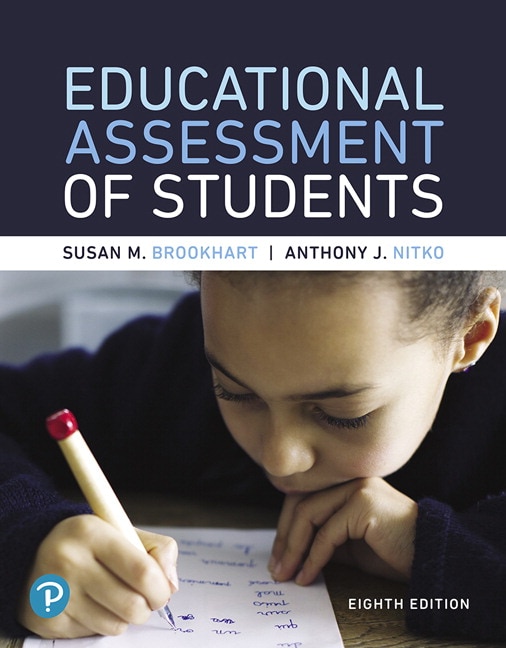Table of Contents
Part I: The Bases for Assessment
1. Classroom Decision Making and Using Assessment 1
2. Describing the Goals of Instruction 18
3. Validity of Assessment Results 37
4. Reliability of Assessment Results 66
5. Professional Responsibilities, Ethical Behavior, and Legal Requirements in Educational Assessments 86
Part II: Crafting and Using Classroom Assessments
6. Planning for Integrating Assessment and Instruction 107
7. Diagnostic and Formative Assessments 132
8. Providing Formative Feedback 152
9. Fill-in-the-Blank and True-False Items 166
10. Multiple-Choice and Matching Exercises 181
11. Higher-Order Thinking, Problem Solving, and Critical Thinking 218
12. Essay Assessment Tasks 240
13. Performance and Portfolio Assessments 260
14. Preparing Your Students to Be Assessed and Using Students’ Results to Improve Your Assessments 299
15. Evaluating and Grading Student Achievement 322
Part III: Interpreting and Using Standardized Tests
16. Standardized Achievement Tests 354
17. Interpreting Norm-Referenced Scores 377
18. Finding and Evaluating Published Assessments 411
19. Scholastic Aptitude, Career Interests, Attitudes, and Personality Tests 425
Appendixes
A. Educational Assessment Knowledge and Skills for Teachers 447
B. Code of Fair Testing Practices in Education (Revised) 448
C. Code of Professional Responsibilities in Educational Measurement 452
D. Summaries of Taxonomies of Educational Objectives: Cognitive, Affective, and Psychomotor Domains 457
E. Implementing the Principles of Universal Design via Technology-Based Testing 464
F. Basic Statistical Concepts 466
G. Computational Procedures for Various Reliability Coefficients 479
H. A Limited List of Published Tests 484
I. List of Test Publishers and Their Websites 486
J. Answers to Even-Numbered Exercises 487
Glossary 491
References 511
Name Index 523
Subject Index 526

0 commentaires:
Enregistrer un commentaire